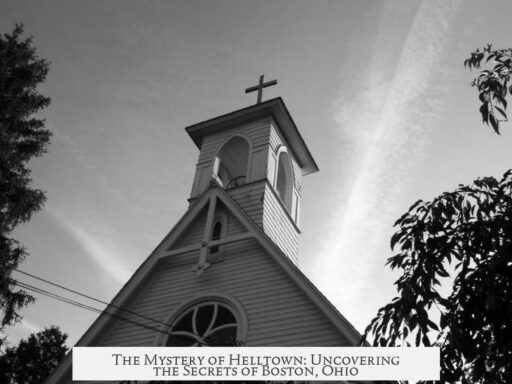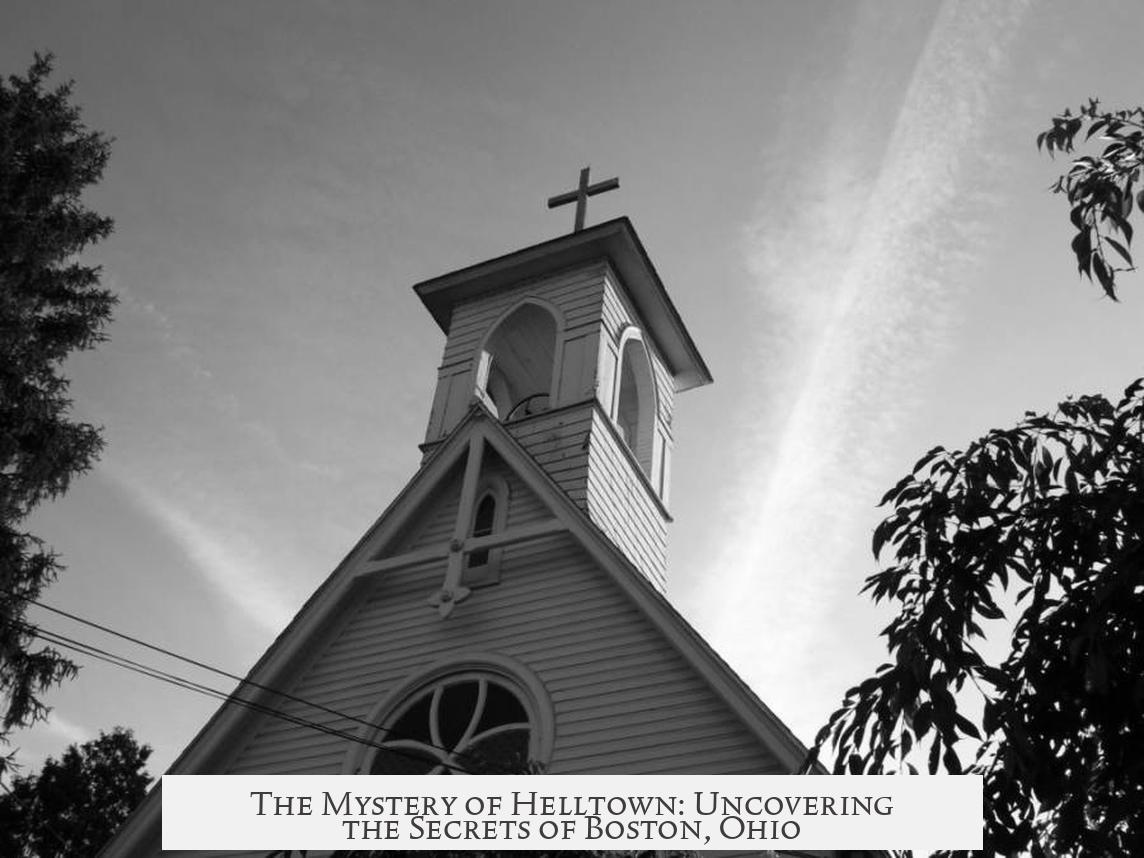Boston, Ohio, often referred to as “Helltown,” has been the subject of numerous myths and conspiracy theories that distort its true history and current status. These fabrications include stories about government cover-ups, satanic churches, and toxic waste dumping. Careful examination clarifies that much of the “Helltown mystery” is fiction, while the actual place has transformed into a peaceful area within a national park.
The term “Helltown” gained traction largely due to sensationalized internet stories and a movie that greatly exaggerates or fabricates details. The film called “Helltown” is widely criticized for poor accuracy. One observer describes it as being “to documentaries what ‘Ancient Aliens’ is to archaeology,” reflecting its reliance on sensationalism rather than fact. This comparison illustrates how unreliable and misleading the film is.
Conspiracy theories suggest the government deliberately bought land to build a National Park as a cover-up for toxic waste dumping by government contractors. One theory states health issues in the area stem from this alleged dumping. However, this claim lacks evidence and contradicts records about local land and environmental conditions. It’s important to note that similar river and glacial valley terrains in Ohio exist elsewhere without any associated towns or hazards. This undermines the notion of a unique or secretive acquisition.
Such stories often mix facts with fiction, and the community’s history is frequently misrepresented online. One post dismisses many of these theories as “the most bullshit” content seen in historical forums, emphasizing that claims often hinge on half-truths. The true history of Boston Township includes typical small-town development, environmental challenges, and eventual inclusion in a federally protected area.
Today, most of what was called “Helltown” no longer resembles the abandoned ghost town often portrayed in media. By 2016, all abandoned homes and buildings were demolished. Only a few structures, like an old barn and a chicken coop, remain, some with active use and surveillance cameras. This clean-up effort cleared the area visually and functionally.
Significantly, much of the former “Helltown” area is now part of the Cuyahoga Valley National Park. The park is a major asset in Northeast Ohio, offering hiking trails, such as the Towpath Trail along the historic Ohio and Erie Canal, and protecting vital green spaces. It sees ample recreational use and is a source of local pride. Visitors enjoy nature walks and education about the rich regional history.
A key aspect of the “Helltown” legend involves myths about a satanic church in the region, often confused with the actual “Mother of Sorrows” Catholic Church. Despite claims of satanic origins and upside-down crosses, the Mother of Sorrows church is located in Peninsula, Ohio—not Boston Township—and functions as a historic Catholic place of worship. Misunderstandings and deliberate myths have fueled false narratives regarding holy sites.
Environmental concerns do hold a kernel of truth but are unrelated to the central myths. The nearby Krejci Dump, once owned by a local resident, has been subject to EPA enforcement due to contamination. This site resembles a landfill and exemplifies real environmental challenges faced by rural communities. Ongoing cleanup efforts have benefited from increased attention, promoting further remediation in the area’s surroundings.
The rise of the “Helltown” narrative online has also sparked issues like plagiarism. For instance, material from reputable sources such as Atlas Obscura has been copied without credit. Atlas Obscura acknowledges that most “Helltown” structures were removed by 2016, meaning “there’s probably not much mystery with this place” anymore. Yet many internet posts recycle this information without proper attribution, contributing to confusion and misinformation.
“Most abandoned structures were torn down in 2016. Today, the area is a vibrant part of Cuyahoga Valley National Park with considerable historical and environmental value.”
In summary, Boston, Ohio’s “Helltown” mystery is primarily an urban legend. The area’s actual story reflects normal rural development, environmental issues typical of many communities, and its current status as a peaceful segment of a national park. Myths about satanic activity and government cover-ups remain unsubstantiated. Visitors can now enjoy natural beauty and local history without sensational distortions.
- “Helltown” myths largely arise from inaccurate media and conspiracy theories.
- By 2016, abandoned buildings in Boston, Ohio were mostly demolished.
- The area is now part of Cuyahoga Valley National Park, a popular recreational site.
- Claims of satanic churches are false; Mother of Sorrows Church is Catholic and located elsewhere.
- Real environmental concerns exist, particularly with the Krejci Dump and EPA cleanup efforts.
- Plagiarism of factual sources has contributed to misinformation online.
What is the truth behind the Helltown conspiracy theories?
The popular Helltown movie and conspiracy stories mix half-truths with fiction. Claims about government cover-ups and toxic waste dumping have no solid proof and are mostly false rumors.
What remains of Boston, Ohio, or Helltown today?
Most abandoned buildings were demolished in 2016. Now, the land is part of Cuyahoga Valley National Park, a popular area for hiking and nature walks. Only a few structures like an old barn still stand.
Is there a real Satanic church in Helltown?
No. The so-called satanic church with upside-down crosses is a myth. The Mother of Sorrows church, often confused with this tale, is a Catholic church located in nearby Peninsula, not Boston Township.
What environmental issues are associated with the Helltown area?
The nearby Krejci Dump has caused ongoing EPA attention due to pollution. However, cleanup efforts have been used to promote environmental recovery in the region.
Has information about Helltown been plagiarized online?
Yes, parts of popular articles about Helltown have been copied without credit. For example, content lifted from Atlas Obscura highlights that most structures were torn down in 2016, reducing the site’s mystery.




